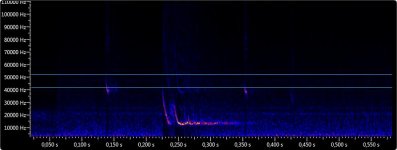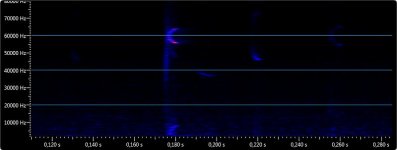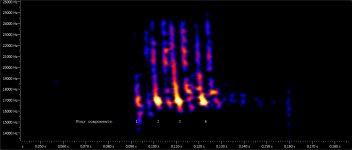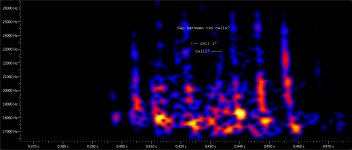I recently bought a Micro Trio Ciel bat detector wich I am starting to learn to use it.
I will try to show here my findings, but also my doubts in sonograms.
First, detecting from home, in Madrid. 90% of the recordings are pipistrellus pipistrellus but sometimes something new crosses in front of my window. I have 5 recordings of what I might identify as pipistrellus khulli/nathusi. Nathusis can happen here, although it is not likely. However I manage to make a recording that included a social call with two components, which it is characteristic of Khullis (Nathusiis have a more sofisticated call). Correct me if I am wrong. I have uploaded both the wav file and the batexplorer sonogram.
I will try to show here my findings, but also my doubts in sonograms.
First, detecting from home, in Madrid. 90% of the recordings are pipistrellus pipistrellus but sometimes something new crosses in front of my window. I have 5 recordings of what I might identify as pipistrellus khulli/nathusi. Nathusis can happen here, although it is not likely. However I manage to make a recording that included a social call with two components, which it is characteristic of Khullis (Nathusiis have a more sofisticated call). Correct me if I am wrong. I have uploaded both the wav file and the batexplorer sonogram.









